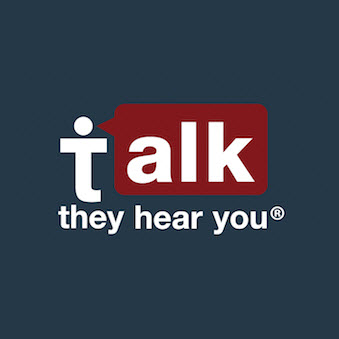Methamphetamine and Stimulants Facts
Methamphetamine and stimulant usage is an area of concern in New Hampshire (NH) and across the United States (US). The presence of stimulants, especially around young people, can present a challenging landscape for parents when navigating conversations with their children.
Methamphetamines and Stimulants in NH
Understanding the Issue
 While not commonly used among NH youth, methamphetamine use is gaining more attention among parents, providers, educators and law enforcement. A large concern is the method of distribution in which illegal methamphetamine is made to look like prescription Adderall pills.
While not commonly used among NH youth, methamphetamine use is gaining more attention among parents, providers, educators and law enforcement. A large concern is the method of distribution in which illegal methamphetamine is made to look like prescription Adderall pills.
Methamphetamine
Methamphetamine is a stimulant that people take to get high and to get a rush of energy. This makes it a popular substance to take when going dancing, clubbing or concerts. Additionally prescription stimulants are used by both high school and college students as “study drugs” to stay awake and hyper focused.
Methamphetamine can be produced to look like a prescription amphetamine medication (such as Adderall or other prescription stimulants). Both prescription stimulants and methamphetamine can be swallowed, snorted, inhaled, smoked, or injected into a vein (increasing effect and potential for addiction).
Methamphetamine is usually found as a white, bitter-tasting powder or pill. Crystal methamphetamine is a form of the drug that looks like glass fragments or shiny, bluish white rocks. Common names for methamphetamine include: chalk, crank, crystal, ice, meth and speed.
Methamphetamine increases the amount of natural chemical dopamine in the brain that is involved in body movement, motivation, pleasure and reward. The drug’s ability to release high levels of dopamine rapidly in reward areas of the brain produces the “rush” (euphoria) or “flash” that many people experience.
People can take methamphetamine by:
- Inhaling/smoking
- Swallowing (pill)
- Snorting
- Injecting the powder that has been dissolved in water/alcohol
Stimulants
A person may misuse both prescription stimulants and illegal methamphetamine thinking they will perform better at school by staying focused, alert and awake. Prescription stimulants are typically the chemical substance Amphetamine which is prescribed under the commercial names Adderall®, Concerta®, Dexedrine®, Focalin®, Metadate®, Methylin®, Ritalin®. Other names for prescription stimulants are: study drug, bennies, beans, black beauties, and addies.
There are two separate but related problems when it comes to the misuse of stimulant drugs. The first problem is the misuse of stimulants that are prescribed to treat Attention Deficit Hyperactivity Disorder (ADHD). When used as prescribed, these medications (Adderall, Ritalin) are safe, effective and have low risk of addiction. These medications are not a problem, if:
- it is your prescription to take (not someone else’s).
- you are taking the right amount and not more to get high.
- you are taking the prescription in the form it was prescribed, like a pill (not crushing or injecting).
- you are not mixing the medication with alcohol or other substances.
When misused, prescription stimulants can be dangerous and addictive. Misuse includes taking a prescription medication:
- that was not prescribed to you.
- in a greater quantity or more often than prescribed.
- in a form other than its original form (e.g. snorting or injecting).
- and mixing it with alcohol or other substances.
The second problem is that illegal methamphetamine is now being made to look like prescription medications. This illegal methamphetamine is dangerous, powerful, highly addictive and potentially lethal. Because of the way it is made, each batch is different in potency or contents and can be laced with other harmful substances like fentanyl. Using one of these look-alike pills puts you at risk of severe consequences. One way to reduce that risk is to only take prescription medication prescribed to you by your doctor and never another source for any reason.
Safe use, storage and disposal of prescriptions
 It is important to use, store and dispose of prescription pain medication safely to prevent opioid misuse.
It is important to use, store and dispose of prescription pain medication safely to prevent opioid misuse.
Practice Safe Use, Storage and Disposal
If someone in your household has prescription stimulants, practice safe use, safe storage and safe disposal.
Safe Use
If you or your child uses prescription stimulants like Adderall or Ritalin, then talk about the importance of never sharing your prescription with another person under any circumstances. Medications prescribed for someone else are not safe for them to take.
Safe Storage
Make sure that any prescription medications are stored away from sight and that you have a general knowledge about the amount that is in the container.
Safe Disposal
Discard all unused or expired medications at a drug take back program or a local participating pharmacy If you are unable to discard medication at a drug takeback program or pharmacy, learn how you can dispose of it safely in your home and regular trash.
Talk with the young people in your life
Educate yourself about the consequences of methamphetamine misuse. Understand how and why young people misuse methamphetamine and learn about the short and long term effects.
Educate your child about the impact of methamphetamine misuse. A child’s brain is developing well into their twenties. Healthy experiences form important connections in the brain that build wiring necessary for learning, problem solving, memory and other tasks. Misusing prescription stimulants and illegal methamphetamine makes it difficult for the young brain to communicate, learn, regulate emotion and mood and process information now and later in life.
Seek expert help when needed. Seek the services and support of a professional when you think your child is misusing prescription stimulants and illegal methamphetamine. Your doctor can help you with treatment, counseling and medication (if needed).
Educate yourself about the harmful effects
Talk with young people, family members and friends in your life. Never underestimate the impact you can have!
Misusing methamphetamine and other stimulants has serious side effects like:
- feeling anxious or paranoid increasing your blood pressure
- causing you to have an irregular heartbeat
- causing your body temperatures to go too hot or overheat
- impacting your sleep
These side effects can put you at risk of overdose.
With long-term use, it can:
- put you at risk of seizures and stroke at high doses
- cause severe tooth decay and gum disease
- cause brain damage resulting in problems with memory and body movements, mood swings
Methamphetamine Overdose
Methamphetamine overdose is on the rise in the United States. Methamphetamine overdose can result in a stroke, heart attack, or organ problems. People often use methamphetamine with other substances, and combining substances can alter the effects of methamphetamine on the body and how someone may feel. Because of the way it is made, each batch is different in potency or contents and can be laced with other harmful substances like fentanyl increasing the risk of overdose.
Methamphetamine Withdrawal
Methamphetamine is addictive. When people stop taking it, withdrawal symptoms can include anxiety, fatigue, severe depression, psychosis, and intense drug cravings.
Treatment and Recovery
Though some people overcome substance use disorders for stimulants without accessing formal treatment, some people may seek counseling or therapy for help. There are several forms of psychosocial and behavioral treatment that have proven to be helpful for people with methamphetamine use disorder.
Other Resources, Supports & Services
 2-1-1 NH – A comprehensive source of information about local resources and services to help you take care of yourself.
2-1-1 NH – A comprehensive source of information about local resources and services to help you take care of yourself.
The Doorway – A statewide service that supports any NH resident, of any age, with a substance or alcohol concern or issue.
NH Alcohol and Drug Treatment Locator – A searchable database with treatment agencies and individual practitioners offering substance use disorder services.
Connection – Strong Relationships Prevent Substance Misuse – This video, by The Partnership, is a good starting point for opening up conversation around healthy decisions and building strong life long habits and relationships.


Spotlight Factsheet: General Facts on Methamphetamine
This factsheet spotlights important facts about methamphetamine so you can make informed decisions around health and safety.

This factsheet spotlights facts about the misuse of prescription stimulants, current concerns about methamphetamine use, and helpful strategies to engage your children in a conversation.

This factsheet spotlights information and resources for healthcare providers to link patients to effective treatment, harm reduction strategies and support.

Spotlight Factsheet: Helping You Reduce the Harm with Methamphetamine
This factsheet spotlights practical ways for you and others to stay healthy and safe while using methamphetamine and stimulants.

Social Media Toolkit to Support Partner Communication about Stimulants and Methamphetamine
The social media toolkit includes sample messages and images that will support digital communication and dissemination of the Spotlight Factsheets to support our prevention community’s response to the rise in methamphetamine use across the state of New Hampshire. Messages can be modified to suit your needs.
